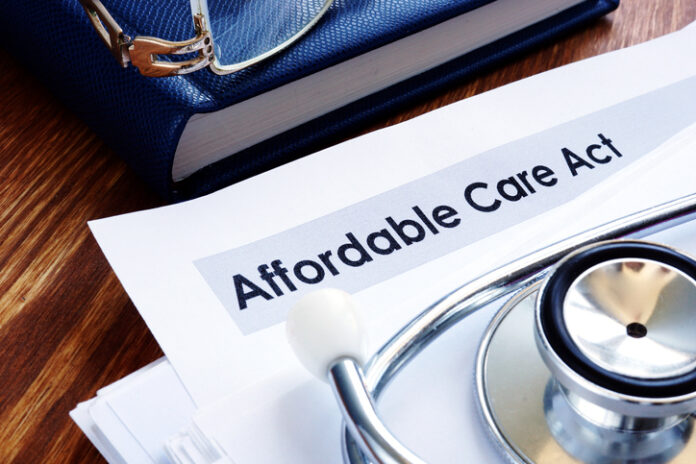By John C. Goodman and Beverly Gossage
Obamacare’s dirty little secret.
When the Affordable Care Act passed in 2010, President Barack Obama and virtually every Democrat in Congress repeatedly made the same argument: the act would make good health insurance at affordable premiums available to people with pre-existing conditions.
Now, suppose at the same time advocates were making this argument in public, there was an evil genie back in the Congressional Legislative Counsel’s Office. The genie’s assignment: create a plan that makes health insurance as good as possible for the healthy and as bad as possible for the sick.
We don’t think there really was an evil genie. But the law looks like it was designed by one.
If you must buy your own health insurance in America today, have an average income and never get sick, your options have never been better. But if you have a serious health problem, your options have never been worse.
Being Sick Is Costly
According to President Joe Biden, health insurance is free or almost free ($10 a month or less) for 80 percent of people who acquire it in Obamacare’s exchange. Plus, preventive medicine (the only kind of care healthy people require) is also free.
If you are sick, things are different. Take a middle-aged couple in Dallas, Texas earning $70,000 a year, with two children who have significant disabilities. Though this family will pay no premium for a Blue Cross bronze plan in the (Obamacare) exchange, they will face a $9,100 deductible for each child. Their total out-of-pocket exposure is $18,200—every year.
In case the family doesn’t qualify for a subsidy (because of high income or some other reason), they will face an annual premium of $12,312. All told, health care for this family, according to HealthCare.Gov, will cost $30,512 every year!
‘Skinny Networks’
It gets worse. Patients with special needs often require the care of highly trained specialists who often work at centers of excellence. But our Dallas family will discover their Blue Cross (Obamacare) plan is not accepted at the University of Texas Health Science Center—one of the top medical centers in the whole country. Nor will it be accepted at MD Anderson Cancer Center in Houston.
When a patient with Obamacare’s coverage goes out of network, the plan usually pays nothing, and the cost does not apply to the deductible or out-of-pocket maximum.
In addition, Obamacare imposes an implicit tax on the earned income of the sick. Suppose our Dallas family earned only $60,000. Their children would qualify for the Children’s Health Insurance Program (CHIP), and HealthCare.Gov says they would not be allowed into a private exchange plan. The parents could select a plan with a zero premium and, staying healthy, would have no out-of-pocket expenses.
Don’t Earn Too Much
So, the penalty for earning an extra $10,000 of income is $18,200 of higher medical costs—even after Obamacare’s subsidy. That’s a marginal tax rate of 182 percent!
Even with the children on CHIP, the parents could have their own serious medical problems. If they do, they will be punished for every extra dollar they earn. At an income, say, of $30,000, the best option is a silver plan with a small premium and deductible. But if their income doubles, rising to $60,000, their out-of-pocket exposure will increase $14,500. That’s an implicit marginal tax rate of 38 percent, on top of all the other taxes they pay.
One thing is clear. Obamacare’s plans are trying to attract the healthy and avoid the sick.
Healthy people tend to buy on premium alone and ignore all other features of a health plan. So, when premiums are set so low the enrollee pays nothing, the plan will attract enrollees who cost almost nothing (because they seldom use medical services). But they will generate government subsidies worth thousands of dollars to large insurance companies.
By contrast, sick enrollees are potentially financial losers. High deductibles and narrow provider networks deter the sick, who are very much guided by these plan features. If a sick potential enrollee chooses a competitor’s plan, so much the better.
If you wonder why Obamacare was designed this way, start with the fact it wasn’t designed by President Obama or by the Democratic leadership in Congress. It was designed by special interests.
Insurance Company Bonanza
Obamacare has been pouring about $60 billion a year in new money into the health care system, lining the pockets of insurance companies, hospitals, and some doctors—although it doesn’t appear there has been any overall increase in the amount of health care being delivered.
Actual patients had no say in any of this.
There is no question most people with serious health problems who must buy their own coverage would be much better off in the pre-Obamacare health system—in just about every state.
In Texas, there was a risk pool for folks who delayed buying a plan until they really needed one. Premiums were twice what others were paying, but much less than Obamacare premiums today. Subsidies were available for low-income buyers. A typical offering was a standard Blue Cross plan, with reasonable deductibles and generous networks.
In the last two sessions of Congress, Democrats had an opportunity to reverse some of the worst aspects of Obamacare. Instead, $30 billion of new “enhanced subsidies,” will make health insurance cheaper for healthy people making as much as several hundred thousand dollars a year.
John C. Goodman, Ph.D. (johngoodman@goodmaninstitute.org) is co-publisher of Health Care News and president and founder of the Goodman Institute for Public Policy Research. Beverly Gossage (beverly@hsabenefitsconsulting.com) is the president of HSA Benefits Consulting and a state senator in Kansas. A version of this article appeared in The Wall Street Journal on September 12, 2023. Reprinted with permission.





















